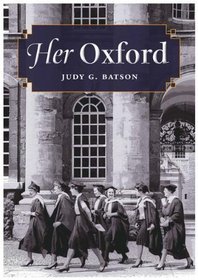Search -
Her Oxford
Her Oxford
Author:
For over six centuries, the University of Oxford had been an exclusively male bastion of privilege and opportunity. Few dreamed this could change. Yet, in 1879, twenty-one pioneering women quietly entered two recently established residence halls in Oxford in the hope of attending lectures and pursuing a course of study. More women soon followed ... more »
Author:
For over six centuries, the University of Oxford had been an exclusively male bastion of privilege and opportunity. Few dreamed this could change. Yet, in 1879, twenty-one pioneering women quietly entered two recently established residence halls in Oxford in the hope of attending lectures and pursuing a course of study. More women soon followed ... more »
ISBN-13: 9780826516107
ISBN-10: 0826516106
Publication Date: 10/24/2008
Pages: 384
Rating: ?
ISBN-10: 0826516106
Publication Date: 10/24/2008
Pages: 384
Rating: ?
0 stars, based on 0 rating
Publisher: Vanderbilt University Press
Book Type: Hardcover
Members Wishing: 1
Reviews: Amazon | Write a Review
Book Type: Hardcover
Members Wishing: 1
Reviews: Amazon | Write a Review
Genres:
- Nonfiction >> Women's Studies >> History




